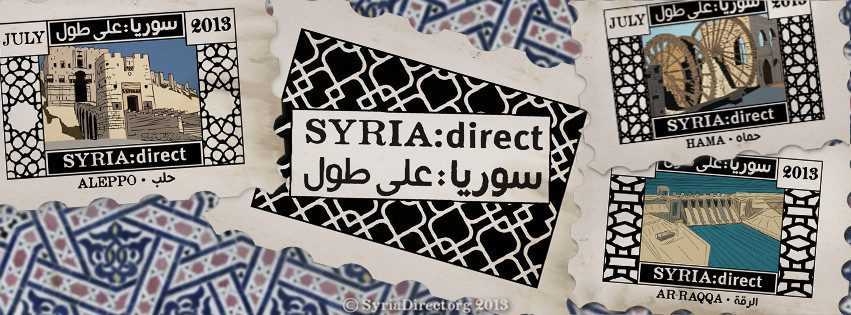Accusations of ties to Islamic State spark infighting in northwest Syria
AMMAN: Two hardline Salafist groups battled in northwestern Syria on […]
14 February 2017
AMMAN: Two hardline Salafist groups battled in northwestern Syria on Tuesday, local sources told Syria Direct, one day after the rival jihadist factions launched a series of suicide attacks, car bombs and targeted arrests against each other.
An online statement released by Hay’at Tahrir a-Sham (HTS) on Monday accused the independent Salafist brigade Jund al-Aqsa of attacking its forces with two suicide bombers and a car bomb that same day, just hours after a sit-down between the two groups to mediate internal disputes.
In that meeting, religious and military leaders within HTS met with and accused Jund al-Aqsa representatives of “coordinating and engaging with the Baghdadi khawarij (Kharijites),” the former said in Monday’s statement, referring to the Islamic State and its leader Abu Bakr al-Baghdadi.
The term “Kharijites,” or “those who went outside [Islam],” refers to a seventh-century school of Islam noted for rebelling against Muslim leaders and for its unorthodox practice of takfir, or excommunication. In its statement, HTS leadership drew a direct connection between Jund al-Aqsa and Abu Bakr al-Baghdadi’s Islamic State, an organization similarly criticized for engaging in takfir.
A Jund al-Aqsa fighter raises an Islamist flag after taking control of the town of Tayyibat al-Imam, northwest of Hama from Syrian government forces on August 31, 2016. OMAR HAJ KADOUR/AFP/Getty Images
Jund al-Aqsa did not publically comment on the ongoing fighting by the time of publication.
Civilians and fighters on both sides have reportedly been killed over the past 48 hours, local sources told Syria Direct, although the exact death tolls are not immediately clear. Pro-regime media reports at least 50 casualties since Monday as a result of the ongoing “jihadist civil war in northern Syria.”
Fighting between the two groups escalated throughout the day on Monday following the meeting and subsequent suicide attacks. Ground fighting has centered near Jund-controlled Kafr Zeita, in northern Hama province, and Khan Sheikhoun, in southern Idlib province.
On Monday, HTS reportedly arrested the lead religious jurist for Jund al-Aqsa, Yaser a-Saeed, a journalist in the north Hama countryside, told Syria Direct on Tuesday.
Civilians are reportedly “holed up in their homes,” Mahmoud, a rebel fighter with the FSA-affiliated al-Firqa al-Wusta brigade from the north Hama city of Kafr Zeita, told Syria Direct on Tuesday. His brigade has withdrawn from Kafr Zeita.
“People are afraid of getting caught in the crossfire.”
Another round of infighting
The ongoing fighting between HTS and Jund al-Aqsa in Idlib province and the neighboring north Hama countryside is the latest in a series of internal rebel conflicts in opposition-held territories in northwestern Syria.
Fighters from Jabhat Fatah a-Sham listen to a speech south of Aleppo in August. OMAR HAJ KADOUR/AFP/Getty Images
Last October, infighting in northern Hama between Jund al-Aqsa and powerful Islamist faction Ahrar a-Sham caused rebels to lose weeks of opposition gains against regime forces there after the groups withdrew from their positions on the frontlines to battle each other, Syria Direct reported at the time.
Those battles came to an end when Jund al-Aqsa pledged its allegiance to Jabhat Fatah a-Sham. That alliance came to an end in January 2017 when JFS, now the lead faction in HTS, formally cut ties with Jund after the latter clashed with Ahrar a-Sham once again.
At the time, JFS cited Jund’s failure to truly merge with its organization in more than name as one of the main reasons for cutting ties with the group.
In late January, after a third round of battles—this time between JFS on one side and Ahrar a-Sham and several FSA brigades on the other—JFS merged with four other opposition factions in northwest Syria to form the HTS alliance, complete with a new flag and online media presence.
At the same time, at least six FSA-aligned groups joined forces with Ahrar a-Sham, swelling its forces.
As the HTS and Ahrar a-Sham coalitions grow, smaller, nationalist FSA battalions in rebel-held Idlib were absorbed into larger Islamist coalitions. As JFS—through HTS—moves to consolidate power and boost its legitimacy in Idlib province, it is not only battling relatively moderate FSA voices, but also Jund, one of the most extreme players and a former ally.
Fighters from Jabhat Fatah a-Sham attempt to break the regime’s encirclement of Aleppo city in August. OMAR HAJ KADOUR/AFP/Getty Images
The current fighting between HTS and Jund may be a sign that JFS aims to continue the rebranding effort that it began by formally cutting ties with Al-Qaeda in July 2016, and is now aiming to distance itself from the most extreme of its former allies.
Despite being the most powerful player in northwest Idlib province, JFS has been under increased pressure in recent weeks amidst an intensified bombing campaign led by the United States. US military officials claim that strikes by manned and unmanned military aircraft have killed “more than 150 Al-Qaeda terrorists” since January 1.







